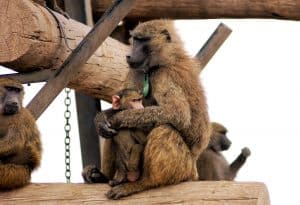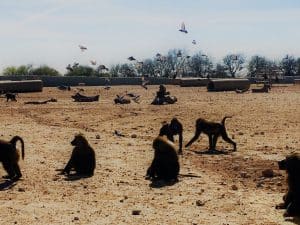Podcast: Play in new window | Download (Duration: 15:45 — 22.0MB)
Subscribe: Apple Podcasts | TuneIn | RSS | More

The baboon is widely used as a model for the study of genetics of complex diseases, and continues as a successful model for many chronic and infectious diseases, including insulin resistance, obesity, heart disease, hypertension and osteoporosis. This resource has also been used to further studies in contraception, tissue engineered heart valves, epilepsy, immune system aging, pertussis, sepsis and ischemic stroke.
SNPRC provides pedigreed baboons for research projects investigating the etiology and pathogenesis of human disease. We have developed and refined the baboon model for biomedical research through selective breeding, inbreeding, environmental manipulations and identifying naturally occurring conditions.
Our pedigreed baboon colony was established in 1972 with 200 feral baboons. Today, SNPRC is home to the world’s largest baboon colony, including about 1,100 animals. The structure of the pedigreed baboon colony has been developed carefully over seven generations of baboons. Because of the complex genetic structure of the colony, animals from this population are uniquely suited to genetic research on normal and disease-associated traits.
Most of the animals in the pedigreed colony have been genotyped, and we’ve used that information to create the first genetic linkage map of any nonhuman primate. Together, the pedigreed colony and the baboon gene map give scientists an incredibly powerful research tool. It helps to locate the underlying genes that lead to natural susceptibility to or protection from a variety of diseases.
